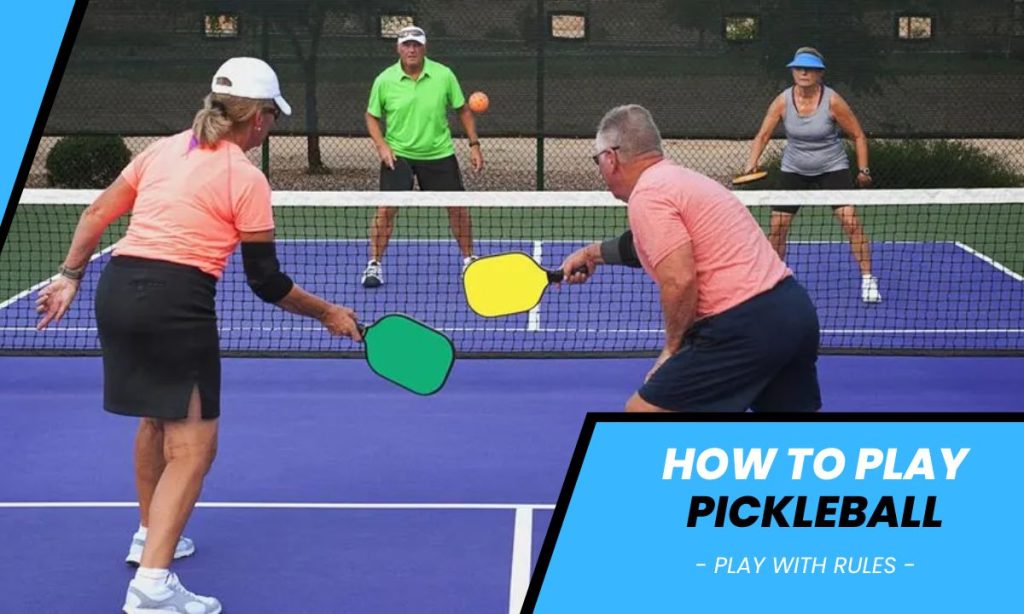Those who have played Pickleball know just how much fun it can be! It’s a more compact version of badminton, tennis, and ping-pong. While Pickleball is played mostly causally, believe us when we say – a competitive game can be a blast. The Pickleball rules are pretty simple, which makes it a really popular game among people of all ages.
Combining the best of both worlds (working out and refining hand-eye coordination), you break a sweat in pickleball and have fun while doing it. So how do you play it? What are the pickleball rules? Let’s dig in!
Table of Contents
How To Play Pickleball Game?
Imagine this—a game that is a revolutionary melange of the three most exciting racquet games—tennis, badminton, and ping-pong. That combines the most thrilling aspects of all three games but on a smaller and more compact scale. That makes pickleball desirable—a high-intensity game combining skill, strategy, and precision.
In pickleball, players use a bat or a paddle (similar to the ones used in table tennis but broader and square-ish) to rally a ball across a pickleball court. A net runs along the middle of the court, and the gameplay is similar to tennis or badminton.
Objective
The objective of pickleball is as simple as any other sport – score more points than your opponent before the stipulated time runs out. However, on a larger scale, pickleball has been a popular sport that helps people ease into sports like badminton and tennis. But what are the rules of pickleball? Let’s delve in.
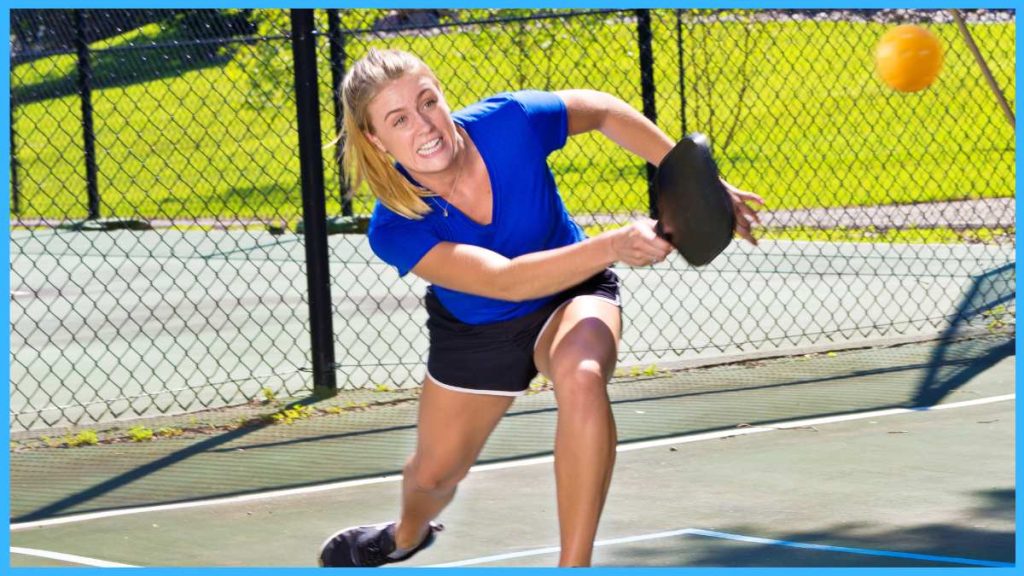
Pickleball Rules
You might want to learn pickleball because the sport fascinates you, or you could learn it as a stepping stone toward developing essential skills for a game like tennis. Either way, knowing the rules of the game in detail is pertinent to playing it like a pro. Let’s learn about the rules of pickleball in detail.
1. General Pickleball Rules
Instead of diving into the specifics, let us first take a gander at the game’s general rules. This will help us get a better idea about pickleball. Some general pickleball rules are as follows:
- Pickleball can be played as doubles or as singles.
- A coin toss is carried out to decide who starts the game.
- The player serving the ball must do so diagonally across the court and using the underhand technique (paddle below the waist height).
- During serving, both feet of the player serving must be behind the back line.
- According to pickleball rules, a valid serve is when the ball clears the net and enters the opposition’s court.
- The receiver and the server must let the ball bounce before returning it.
- If, while serving, the server’s ball touches the net, it will be declared a ‘let.’ The opposite team will get a chance to serve. There are no limits to this (unlike tennis or badminton).
- There is a 7-foot non-volley zone on either side of the net that prevents players from smashing the ball toward the opposition’s court. Volleys can be played outside this zone, and when in this zone, all non-volley shots are allowed.
- Serves are alternated till a predecided score is reached (can be 11, 15, or 21).
- A ball is declared ‘in’ if it touches any part of the sideline or the baseline.
2. Service Rules
The service is the first shot of the game and is repeated every time a point is gained or lost. Therefore, it is essential to know the pickleball rules and regulations with regard to serving. They are as follows:
- A legal service constitutes an underhand serve where the paddle strikes the ball below the waist level. The tip of the paddle must be below the wrist, and the upward motion will be of the arm, not the wrist.
- The player serving must have at least one foot behind the baseline and on the court surface.
- If a service results in a ‘let,’ then another service can be made. However, the pickleball rules state that the number of times this can happen is unlimited.
- If a ‘let’ serve touches the partner of the player the ball was served to before touching the court, it will be declared a ‘let’ and replayed.
- However, if a player’s serve hits any of the opponents before touching the court, then it is a point to the player serving and their team.
- The Two-Bounce Rule states that the ball should bounce before striking the ball when serving or returning a serve.
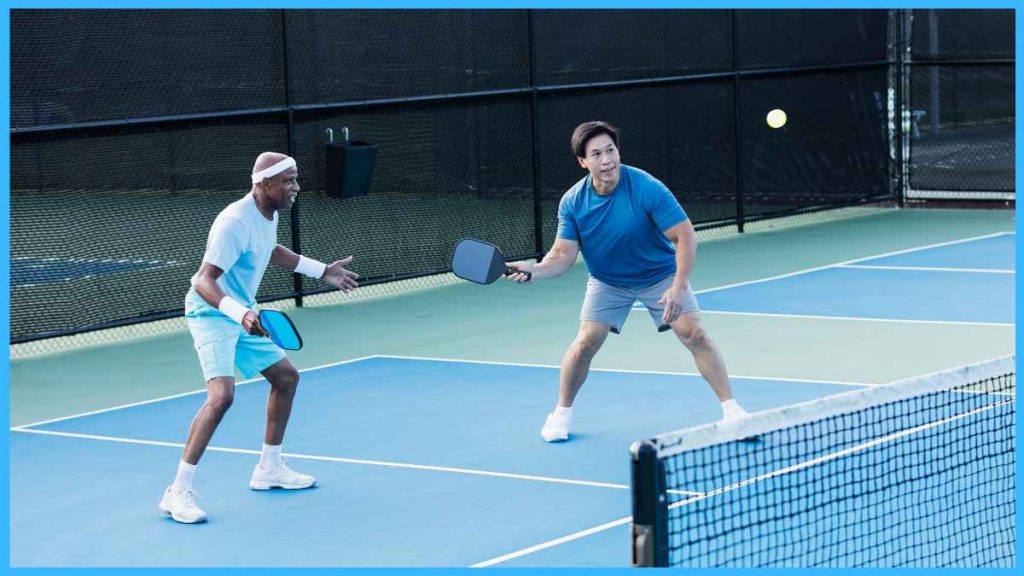
3. Service Sequence Rules
To avoid confusion during the game, it is important to have ground rules for the service sequence. This facilitates a smoother gameplay for everyone. Listed below are the service sequence rules for pickleball:
- For the team that gets to start the game, only one player is allowed to serve.
- According to the rules of pickleball, the player serving must always serve from the right-hand side of their own court. Their service must be cross-court (to the right-hand side of the opposition’s court).
- When performing the first service of the game, the player serving must call out “zero-zero-two.” This means that the player serving is declaring both their own score and their opponent’s score as ‘zero.’ The two in the phrase signify the serving player being the only player serving and thus acting as the second server.
- After a game point, the server must reposition to serve to the other side of the court. The server cannot serve the same player or the same service box twice in a row. However, the serving player can change positions with their partner.
- Pickleball rules state that if the first serving team ‘faults’ while serving, the serving privilege is automatically transferred to the opposing team.
- Then, the second team serves by calling out a similar phrase. However, if the first team scored some points (let’s say 2 points) before the fault, then the second team would call out “zero-two-one.” Here, the score for the second team is zero, and the first team is two. ‘One’ states that the server from the second team is the first server. This team gets a service sequence of two faults (each player in the team serves till their team commits a fault).
- After the first fault is committed, the second player from the team serves. This player serves from whichever side they were playing on (in this case, they serve from the left side since the first server from the second time served from the right side). They also have to call out the running score and will continue to serve until their team commits a fault.
- After the two-fault sequence, the serve goes back to the first team. From this point onwards, every player in each team will complete their serving turns to complete each service sequence.
- Points scored while serving from the right-hand side of the court will be even-numbered, while points scored while serving from the left-hand side of the court will be odd numbers, per pickleball rules.
4. Non-Volley Zone Rules Of Pickleball
The pickleball rules state that the non-volley zone is the 7ft zone on either side of the net. It is also called the ‘kitchen’. This area plays a crucial role in the gameplay. Here’s how:
- The air and the area above the non-volley zone are not part of the zone.
- Players can enter the non-volley zone as and when they like, provided they do not hit smashes or volley shots from within the zone.
- Volleying by jumping over the non-volley zone and into the out-of-bounds area (in the air) is allowed, per pickleball rules.
- It is not a fault if a player hits a ball from inside the non-volley zone after it bounces off the court.
5. Singles Rules
Pickleball can be enjoyed as a singles or doubles game. The rules obviously change when it comes to the dynamics of the game. First, let’s find out what the rules are for a singles game of pickleball:
- The games are played to 11 points (it can be more), and the winner has to have a 2-point lead.
- The server usually begins from the right side of the court. However, after a point, the server has to switch sides (serve from the left side of the court). So, the right side constitutes even numbers as points, whereas the left side constitutes odd numbers as points.
- Further, the serve must be crosscourt (to the right side of the opposition’s court) and cannot touch any part of the non-volley line. If the ball touches any part of the non-volley line, it is declared ‘short’ and a fault.
- The server has only one service attempt unless the service is a ‘let.’
- According to the pickleball rules, players standing in the non-volley zone can only strike the ball after it has bounced.
6. Doubles Rules
The only way to ‘double’ the fun in pickleball is to play it as a doubles sport. The general rules of pickleball stay the same. However, there are a few variations in terms of service. Let’s find out what the rules are for doubles pickleball:
- If playing doubles, only the player served can return the ball. If their partner touches the ball, then the team serving the ball is awarded a point.
- To start the game, only one player from the starting team (first to serve) gets to serve before the service goes to the other team. Then, each player from both teams will serve before the serving turns are switched between the teams.
- After a point is scored, the serving player will change their position with his partner. However, the opposite team (receiving team) doesn’t change their position.
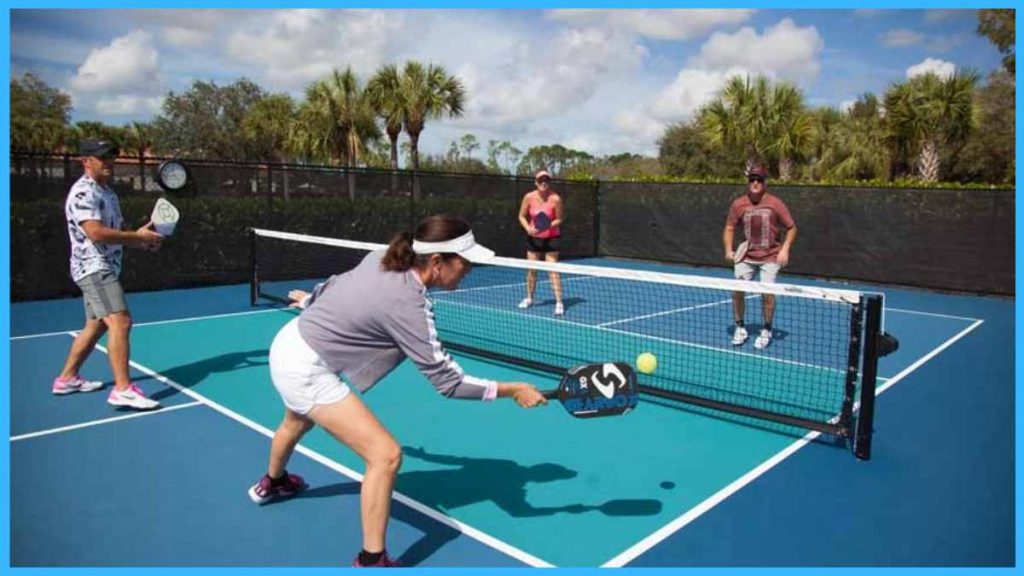
Foot Faults
A foot fault is the most commonly occurring fault in a game of pickleball, which happens due to misplaced positioning of the foot when serving or volleying. Footfaults can be of two types – service foot faults and kitchen foot faults. Let’s learn more about these two and how to avoid these fouls:
1. Service Foot Fault
Service Foot Fault occurs when the serving player’s foot crosses over or is placed on the baseline when serving to the opposing team. The official pickleball rules state that the following rules need to be observed to avoid service foot faults:
- The serving player must deliver the service from at least a foot behind the baseline.
- At least one foot needs to touch the surface of the court.
- The serving player must stand within the imaginary lines that extend from the centerline and the sidelines.
- Avoid stepping into the court (beyond the baseline) until after the service has been completed.
2. Kitchen Foot Fault
‘Kitchen’ refers to the 7ft area extending on either side of the net. It is commonly referred to as a non-volley zone. By extension, a kitchen foot fault refers to the mistake that pickleball players make when they step into the non-volley zone to complete a volley before the ball has hit the ground. The following are some of the ways in which a player can commit a kitchen foot fault:
- Stepping on the non-volley zone line or over it when serving serves as a fault, per pickleball rules.
- Touching your partner or anything else in the non-volley zone when serving.
- Your gear or equipment ends up touching the non-volley zone or gets dropped inside it when serving.
- The paddle touches the non-volley zone while serving or as an after-effect of the serve.
- Entering the non-volley zone or if your gear or any body part touches the non-volley zone as a result of momentum generated during service.
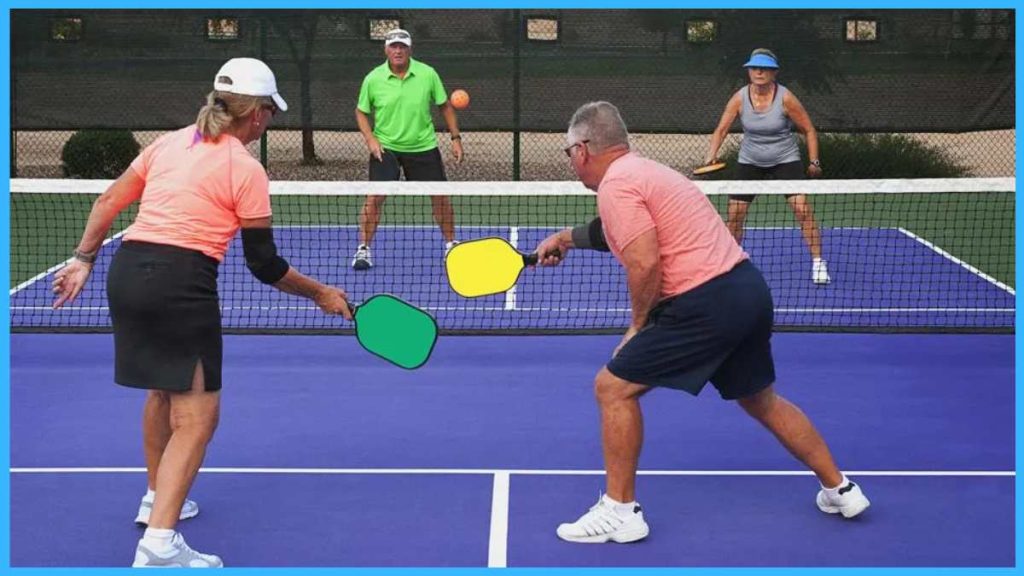
Scoring
The higher you score, the more chances you have of winning at pickleball. However, there are specific rules and regulations as well. Points can only be scored by the side that is serving. To score, the server needs to play such that the:
- The opponent fails to return the rally or misses.
- Opponent volleys in the non-volley zone
- The opponent hits the ball out of bounds.
Winning
Once you know: ‘What are the rules of pickleball?’ it’s easy to win the game. It takes an explosive combination of skill, flexibility, high-tuned reflexes, and good coordination to win a pickleball game. If playing as singles, the outcome entirely depends on individual skill. However, for doubles, the strategy should be two-pronged—on an individual level and as a well-coordinated team.
However, pickleball rules state that the first team or player to reach 11 points (can be 15, 21, or any other number decided beforehand) with a 2-point lead over their opponent wins the game.
Pickleball Court
A regular-sized pickleball court is roughly the same size as a full-length doubles badminton court. However, according to pickleball rules and regulations, a standard pickleball court measures 44 feet (length) X 20 feet (width). The net height of the court is 36 inches on either end and 34 inches in the middle.
Tips & Strategies
Ultimately, how well you play is determined by how many hours of practice you put in. However, a little tip goes a long way in improving the game – all while staying within the rules of pickleball. In this section, we have listed a few practical and effective tips and strategies that can help you have an edge over others:
- Serving deep and accurately will always make it more difficult for the opponent to return the ball with the same accuracy or force. Serving deep will force the opposite player to move backward and use the backhand.
- Use lobbed shots to gain time to get into the volley zone. The lobbed shots take time to bounce. However, be aware of returning volleys or smacks.
- Call your shots to avoid confusion between you and your partner. Decide on the angles each of you plan on taking and try to stick to that.
- Be extra careful in the kitchen area since that is where most people end up committing a fault. Play a lobbed shot or a slower shot that tempts the opponent to hit a volley from the non-volley zone.
- Stay down on your knees instead of standing up straight. This posture will give you more mobility and allow you to move at a quicker pace.
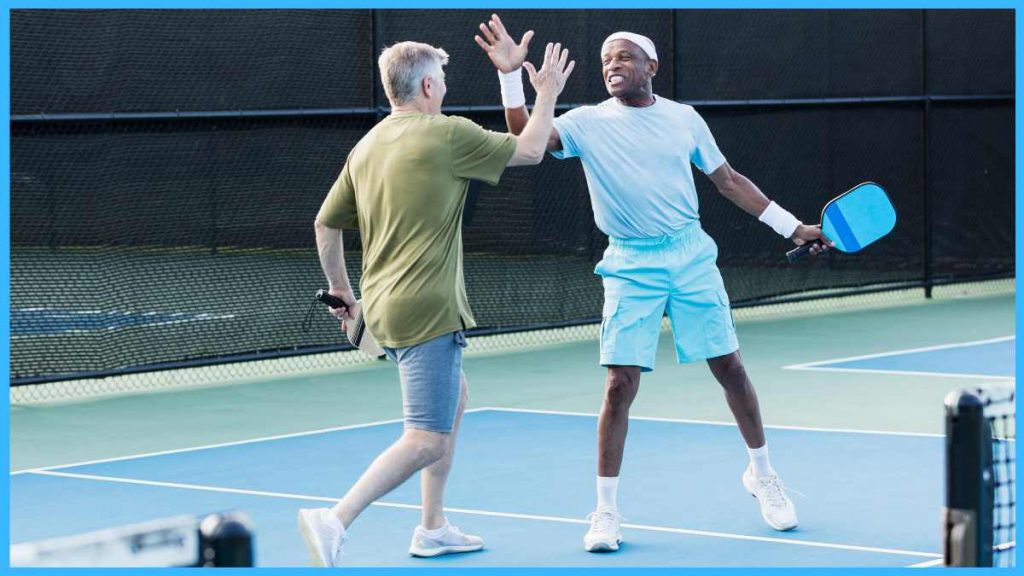
Did You Know?
- In 2019, a group of pickleball enthusiasts set a Guinness World Record by hosting the largest pickleball tournament ever, with over 2,000 participants.
- Pickleball game was invented back in 1965 by three dads on Bainbridge Island, Washington. They originally invented it as a fun game to play with their kids during summer.
- Contrary to common belief, the game is not named after the ‘pickle’ vegetable. It was actually named after the dog of one of its inventors.
FAQs
Can I play pickleball on a badminton court?
Certainly! The standard pickleball court is roughly the size of a badminton court. However, be careful with the lines and make sure the demarcations are clear before starting the game.
Is Pickleball Game an Olympic sport?
No. Pickleball is played primarily as a casual sport or as a sport to bond over. There are several professional pickleball tournaments across the country that may differ in terms of pickleball rules, but not at the Olympic level.
What is the Golden Pickleball Rule?
The golden pickleball rule is to engage your entire body when playing. This means being light on your feet when hitting the ball and when positioning yourself for a return.
How do I win pickleball game?
There is no thumb rule for winning in any game. Here is a valuable tip that can help you majorly: find your opponent’s weakness early on in the game by playing a variety of shots in either direction.
Be it a social event, a meet and greet, or a serious game – Pickleball is the perfect game for all occasions. Exciting as it is, the nature of the game can be quite addictive once you understand the rules of pickleball. It is a great game to enhance your physical endurance and body coordination. Do you have nimble footwork? Try a pickleball game and prove yourself!
Now that we have learned about the Pickleball rules, let’s learn about another sport, shall we? How about Farkle Rules? Click here to learn the rules!

